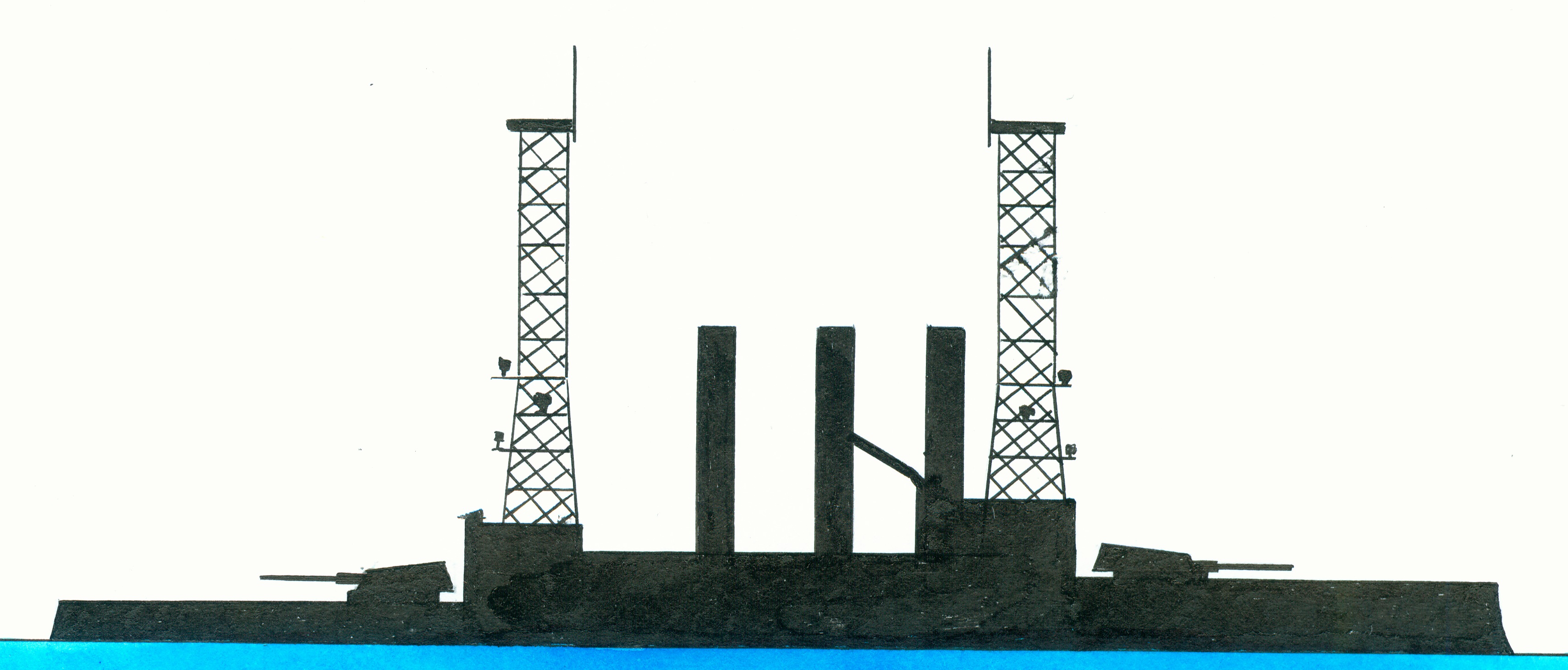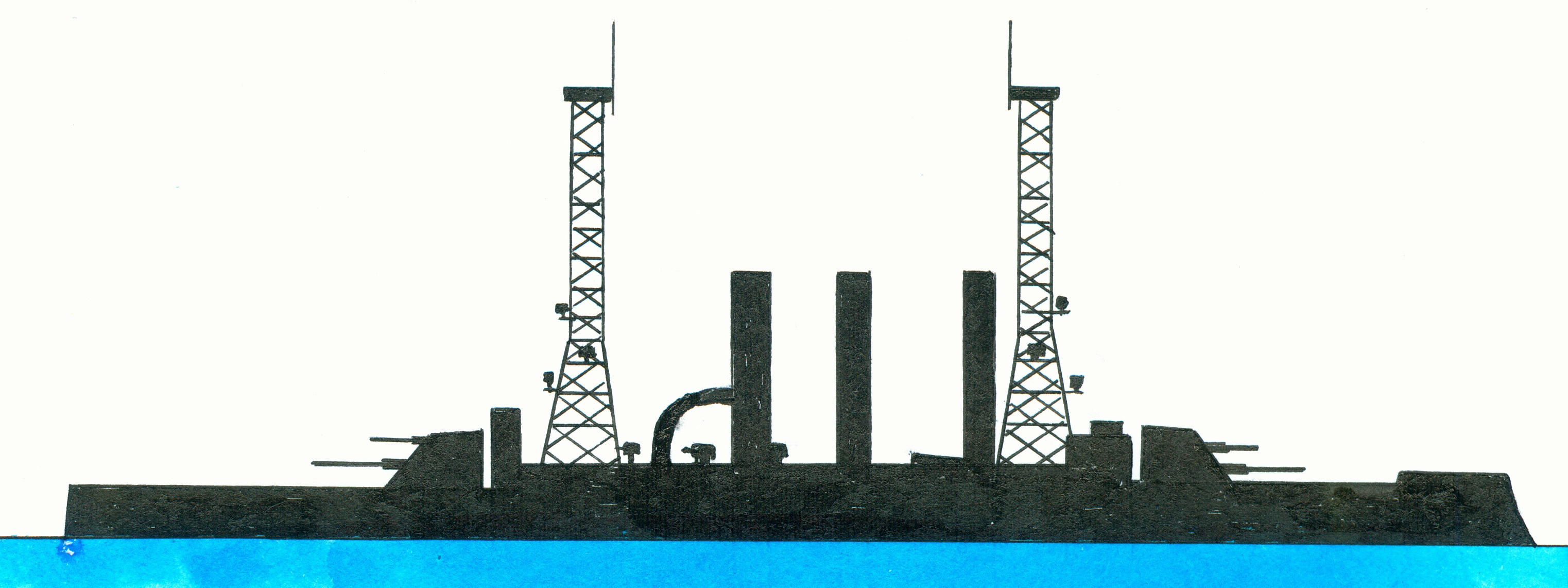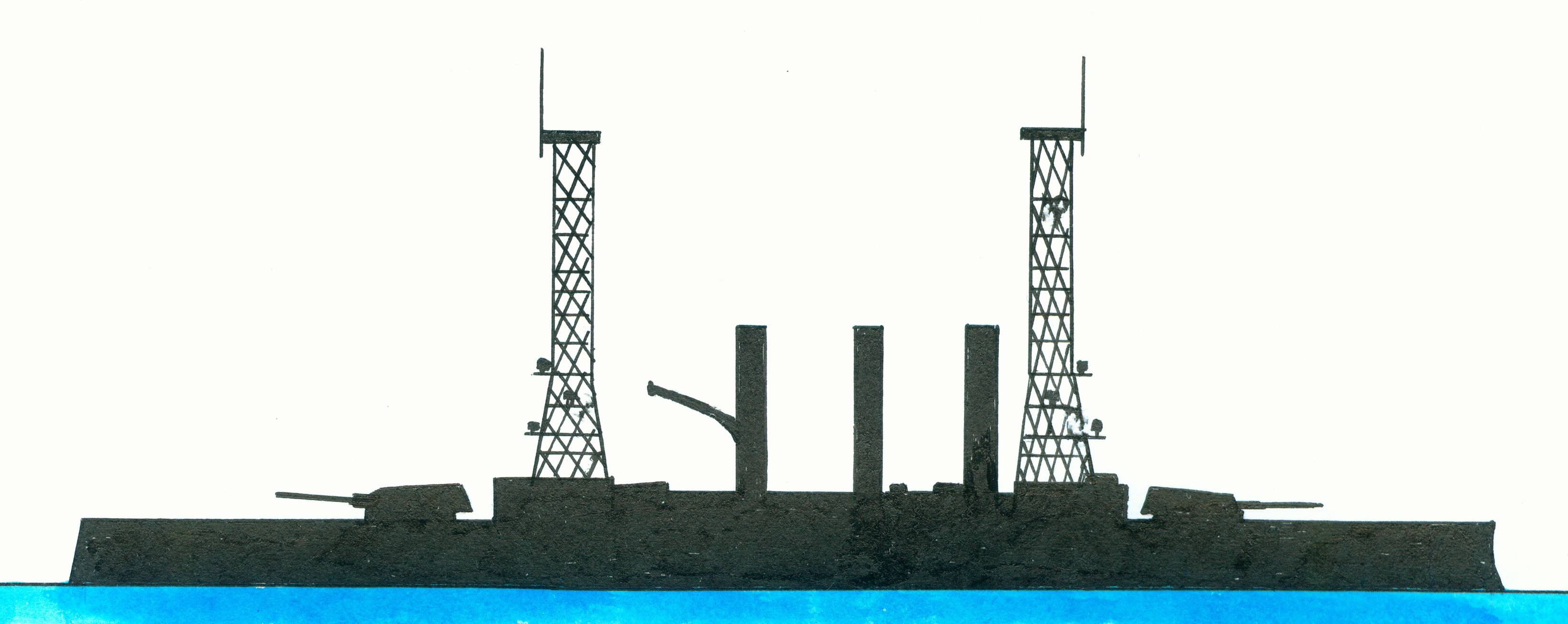Maine-class
Virginia-class
Virginia-class consisting of the New Jersey, Rhode Island, Virginia, Georgia and Nebraska. Preceded by the Maine-class and succeeded by the Connecticut-class. After the Spanish-American War became clear that if the US Navy wanted to operate abroad larger battleships were needed. Starting with designs based on the Maine-class design increased the displacement more and more in the developing process.Laid down by Moran Brothers shipyard, Seattle, Washington, USA on 4 July 1902, launched on 7 October 1904, commissioned on 1 July 1907, decommissioned on 2 July 1920, stricken on 12 July 1922, declared to be useless for war purposes under the Washington Naval Treaty on 9 November 1923 and sold to be broken up.
General technical specifications of this class. With a displacement of 15.188 (design)-16.352 (full load) tons and as dimensions 133 (waterline)-134,49 (over all) x 23,24 x 7 metres or 441.3 x 76.32 x 23.9 feet. The machinery consisted of 2 vertical triple expansion reciprocating steam engines and 12 coal-fired Babcock&Wilcox boilers supplying 19.000 ihp allowing a speed if 19 knots. The crew numbered 812 men (included 40 officers). The two heavy military masts included fighting topes were in 1909 replaced by cage masts. The armour consisted of a 15,2cm/6”-27,9cm/11” thick belt and with the barbettes, gun turrets and conning tower protected by respectively 25,4cm/10”, 30,5cm/12” and 22,9cm/9” thick armour. The armament consisted of 2x2-30,5cm/12” /40cal guns, 4x2-20,3cm/8” /45cal guns, 12-15,2cm/6” /50 Mark 6 guns, 12-7,6cm/3” /50 cal guns, 12-3pd guns and 4-53,3cm/21” torpedo tubes.



